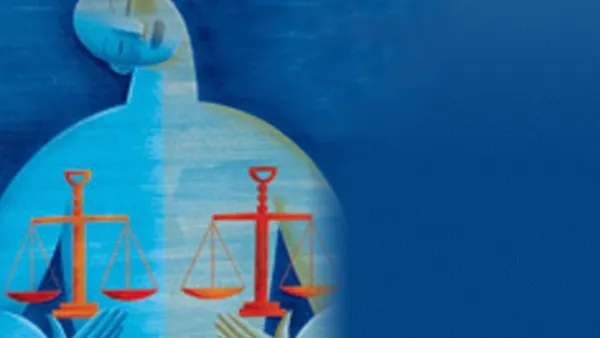Article III judges, including Justices of the Supreme Court, are appointed by the President with the advice and consent of the Senate. The Constitution doesn't have what might be considered a job description for Article III judges. The nomination process and the confirmation process bring to light information about nominees.
In this activity, participants examine the key reference to Article III judges in the Constitution. They look at biographical profiles of federal judges to learn about diverse pathways to the bench. Participants also gain insight into the role of judges as described by John G. Roberts, Jr. when he testified before the Senate Committee on the Judiciary in his confirmation hearing for Chief Justice of the United States.
How to Use These Resources
-
Primary Document: Participants read and analyze the following section of the Constitution.
" . . . The Judges, both of the supreme and inferior Courts, shall hold their Offices during good Behaviour, and shall, at stated Times, receive for their Services a Compensation, which shall not be diminished during their Continuance in Office."
— Article III, Section I, U.S. Constitution - Small-Group Process: Participants discuss and develop a list of the professional preparation and qualifications they believe an Article III judge/justice should have.
- Independent Analysis: Participants work independently to select and review several profiles of federal judges. They write a list of the preparation and qualifications they find in the profiles. Returning to their small group, they share their lists, identify commonalities, and develop a group list of their findings.
- Revisit the Primary Document: In the large group, participants refer to their copy of Article III, Section I, U.S. Constitution and compare their two lists to it. They discuss their conclusions.
- Testimony: Using excerpts from Roberts’ opening statement to the Senate Committee on the Judiciary, participants identify key points and discuss what the testimony reveals about his view of the qualifications and role of a judge and a Supreme Court justice.
Additional Activity
Gather Information: Using as a guide some of the general categories of information requested as part of a Senate confirmation process, participants research the background of an Article III judicial nominee.
Analyze Research: Working in small groups, participants compare their research, evaluate the sources, and pool their information to fill out the questionnaire.
Video: Judges' Oath of Office
Federal judges say their oath of office and explain what it means to them every time they take the bench. The oath is part of the Judiciary Act of 1789, which is commemorated on September 24th.
Biographical Directory of Judges
Find biographical information, from 1789 to present, on presidentially appointed federal judges.

